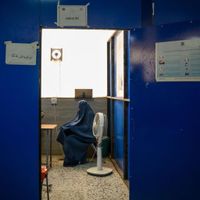For nearly two days, Afghanistan was thrust into an eerie silence as the Taliban government imposed a sweeping nationwide telecommunications blackout, severing the country’s lifeline to the outside world and triggering waves of confusion, fear, and anger. The blackout, which began on the evening of September 29, 2025, and lasted until October 1, affected not only ordinary Afghans but also businesses, government offices, and the Afghan diaspora scattered across the globe. As cell phone and internet services flickered back to life, the collective sigh of relief was palpable, but so too was the outrage over what many see as yet another assault on basic freedoms.
According to Radio Free Europe/Radio Liberty, the Taliban’s abrupt move to cut off fiber-optic internet and cell phone service came without warning, leaving millions scrambling to adjust. Flights were disrupted, banking and e-commerce ground to a halt, and the country’s fragile economy was pushed even closer to the brink. A businessman in Kandahar, speaking to RFE/RL’s Radio Azadi on condition of anonymity, summed up the impact: “It had a massive impact on our trade, work, and cargo transportation. We couldn’t even do five percent of our normal work.”
The blackout, widely described as the most extensive and coordinated telecom shutdown since the Taliban returned to power in 2021, followed weeks of regional internet restrictions. The Taliban had previously cited concerns over “immorality” as the reason for blocking access in several provinces, but this time, the entire nation was plunged into digital darkness. The Taliban has not offered an official explanation for the move, but as CNN reported, earlier warnings had been issued by officials threatening to cut internet access to prevent “immoral activities.” Haji Zaid, spokesman for the governor of Balkh province, confirmed that the order came from the Taliban’s reclusive supreme leader, Mawlawi Haibatullah Akhundzada. “An alternative system will be established within the country for essential needs,” Zaid said, though he did not clarify what that would entail.
For Afghanistan’s 43 million citizens, the consequences were immediate and profound. The United Nations Assistance Mission in Afghanistan (UNAMA) quickly called on the Taliban to restore telecommunications access, warning that the blackout had left the country “almost completely cut off from the outside world, and risks inflicting significant harm on the Afghan people, including by threatening economic stability and exacerbating one of the world’s worst humanitarian crises.”
Afghans abroad described a mounting sense of panic as they lost all contact with loved ones back home. Mohammad Hadi, an Afghan living in New Delhi, told CNN, “There is no means to talk, to be sure that they are safe or not. It is disrupting everything, I mean, everything is connected, at least we could make a call before.” Wahida Faizi, an Afghan journalist now based in Denmark, echoed the sentiment: “It has only been a few hours since the internet was cut off in Afghanistan, but for me, it feels like a lifetime has passed. Every day after work, my mother and father’s voice brought peace to my heart … Perhaps we always complained about the slow internet in Afghanistan, but today I have realized that even faulty internet and those simple moments of video calls were such a great blessing.”
Back inside Afghanistan, the blackout hit hardest among those already marginalized by Taliban rule—especially women and girls. Since 2022, Afghan women have been banned from most forms of work and education. The internet had become a vital, if fragile, bridge to the wider world, offering access to online classes, remote jobs, and support networks. “During these 48 hours, we felt like we were being suffocated,” a woman from Herat province told Radio Azadi. With the blackout, many feared that the last threads of connection—and hope—were being cut.
As reported by Marie Claire, the digital blackout compounded the isolation imposed by the Taliban’s so-called “vice and virtue” laws, which even restrict women’s ability to speak loudly inside their own homes. “The human cost is devastating,” said Kathryn Allan, a spokesperson for Amnesty Feminist Network, who called on the international community to hold the Taliban accountable for human rights violations and to recognize gender apartheid as a crime against humanity. Yet, as Allan noted, “Afghan women refuse to be silenced. Both inside Afghanistan and in the diaspora, they continue to resist with extraordinary courage.”
For women like Masoma, Maryam, and Saghar—Afghan refugees now living abroad—the blackout deepened the pain of separation from family and home. Masoma, who fled Kabul after working with the British Council, described her family as “my pulse, the very rhythm of my existence.” Maryam, an architect who volunteers with Daricha (an online initiative providing training and mentorship to women banned from formal education), explained how the blackout threatens to strangle what little support remains for women inside Afghanistan. “We are working to provide training and mentoring for architecture and urban design students…female students who were denied the right to education after the changes in Afghanistan,” she said. Without internet access, initiatives like Daricha are rendered nearly powerless.
The blackout also jeopardized the fragile gains made by Afghan women in recent years. “Afghanistan has now lost four years of women university graduates—an entire generation of doctors, engineers, teachers, and leaders simply erased,” Allan told Marie Claire. For girls who had relied on online classes after being barred from school beyond grade six, the darkness was more than metaphorical—it represented the erasure of opportunity itself.
Media organizations were not spared. Tolo News TV, one of Afghanistan’s leading broadcasters, reported that its operations were severely affected, while international agencies like the Associated Press and Agence France-Presse were unable to contact their Kabul bureaus. The silence, as exile Afghan government member Mariam Solaimankhil wrote on X, was “deafening.” She pleaded for help from tech companies, arguing, “Starlink is the only way to break the chains of Taliban censorship.” (Starlink, however, is not currently available in Afghanistan.)
Activists and aid organizations warn that the blackout could have devastating long-term consequences for a nation already mired in economic collapse and humanitarian crisis. Sabena Chaudhry, communications manager at Women for Afghan Women, told CNN that the blackout “is not only silencing millions of Afghans but also extinguishing their lifeline to connect with the outside world.” The UN’s July 2024 report described a “climate of fear and intimidation,” disproportionately targeting women and girls, and the blackout only intensified those conditions.
With the restoration of telecommunications on October 1, some semblance of normalcy returned, but many Afghans remain on edge, fearing future blackouts and further restrictions. The Taliban’s willingness to wield digital darkness as a tool of control has sent a chilling message, both to Afghans and to the world: the struggle for freedom and connection in Afghanistan is far from over.
For now, the voices of Afghan women, activists, and ordinary citizens—though briefly silenced—continue to find ways to reach beyond the darkness, reminding the world that their fight for dignity, education, and basic rights endures, no matter how many times the lights are switched off.




